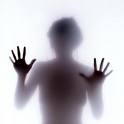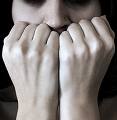Feeling anxious is a common and normal response to situations in our lives typically created by excessive demands that we are not accustomed to like writing an exam, heavy workloads or dealing with problems in a relationship.
These feelings are different from symptoms of an anxiety disorder. People with anxiety disorder have difficulty finding a reason for why they’re feeling the way they do. Their anxiety may be triggered by certain events but the symptoms often occur seemingly on their own. They can appear as a prolonged sense of distress and fear without an obvious reason. People with an anxiety disorder will typically begin to accommodate the physical and cognitive sensations by avoiding certain situations and can become agoraphobic, which is primarily an avoidance of all situations where the person does not feel they have a sense of control. People with anxiety feel at risk, fearful, out of control and helpless.
They often feel that nothing can help. They may feel embarrassed or ashamed and that they should be able to manage this on their own. There are various treatments available and the first step is to increase your awareness and understanding of your anxiety.
There are different types of anxiety disorders which affect behaviour, thoughts, emotions and physical health. Anxiety is primarily caused by a combination of biopsychosocial factors; biological being what we inherent from our parents genes, psychological being a persons character and nature and sociolological being a persons life situation. It is important to have a routine medical examination to help understand your medical condition and to examine any physical contributing factors. You may be dealing with more than one type of disorder and the symptoms can coexist with depression, eating disorders or substance abuse.
Types of anxiety:
Panic Disorder – Typically known as panic attacks which can occur without warning and are often accompanied by sudden feelings of terror. Physically, an attack may cause chest pain, heart palpitations, shortness of breath, sweating, dizziness, abdominal discomfort, feelings of unreality and fear of dying. When a person avoids situations that he or she fears may cause a panic attack, his or her condition is described as panic disorder with agoraphobia.
Phobias – Phobias are divided into two categories: social phobia, which involves fear of social situations, and specific phobias, such as fear of spiders, flying, blood and heights, etc.
Social Phobia – People with social phobia feel a paralyzing, irrational self-consciousness about social situations. They often have an intense fear of being observed or of doing something horribly wrong in front of other people. They feelings cause people to often become reclusive, tentative and paranoid. The feelings are so extreme that people with social phobia tend to avoid objects or situations that might stimulate that fear, which dramatically reduces their ability to lead a normal life.
Specific Phobias – Fear of flying, fear of heights and fear of open spaces are some typical specific phobias. People suffering from a specific phobia are overwhelmed by unreasonable fears, which they are unable to control. Exposure to feared situations can cause them extreme anxiety and panic, even if they recognize that their fears are illogical.
Post-Traumatic Stress Disorder – A terrifying experience in which serious physical harm occurred or was threatened can cause post-traumatic stress disorder. Survivors of rape, child abuse, war, car accidents or a natural disaster may develop post-traumatic stress disorder. Common symptoms include flashbacks, during which the person re-lives the terrifying experience, nightmares, depression and feelings of anger or irritability. They often fear that the trauma will re-occur at some point.
Obsessive-Compulsive Disorder – This is a condition in which people suffer from persistent unwanted thoughts (obsessions) and / or rituals (compulsions) which they find impossible to control. Typically, obsessions concern contamination, doubting (such as worrying that the iron hasn’t been turned off) and disturbing sexual or religious thoughts. Compulsions include washing, checking, organizing and counting.
Generalized Anxiety Disorder –Experienced like a “free-floating anxiety” characterized by repeated, exaggerated worry about routine life events and activities. The individual anticipates the worst, even if others would say they have no reason to expect it. Physical symptoms can include nausea, trembling fatigue, muscle tension, or headache.
 How can anxiety disorders be treated?
How can anxiety disorders be treated?
There are two main medical approaches to treating an anxiety disorder, drug therapy and cognitive-behavioural therapy (CBT). Combining the two types of treatment often promotes the most effective outcome. There are other methods which may prove helpful as well. It’s important to look at other contributing factors like nutrition, excercise, general health and lifestyle.
Because most anxiety disorders have at least some biological component, anti-depressants and anti-anxiety drugs can be prescribed to help relieve the physical symptoms and to accelerate the therapeutic process. Nobody like taking pills, however, it is important to be open to getting the help and to understand that it often helps accelerate the therapeutic process. Speak with your physician about possible medications. As previously mentioned, other alternative may be explored as well.
Therapeutic strategies can be effective in reducing symptoms in each of the anxiety disorders. The techniques used include cognitive restructuring, to help people turn their anxious thoughts, interpretations and predictions into thoughts which are more rational and less anxious. People with anxiety disorders may also benefit from controlled exposure to feared objects or situations.
The goal is to help you regain a sense of effective control in your life without anxiety. Begin by charting or writing about your anxiety… when it occurs, how you experience it physically, mentally and emotionally. Speak with your doctor about your anxiety and then contact a therapist familiar with appropriate treatment.


